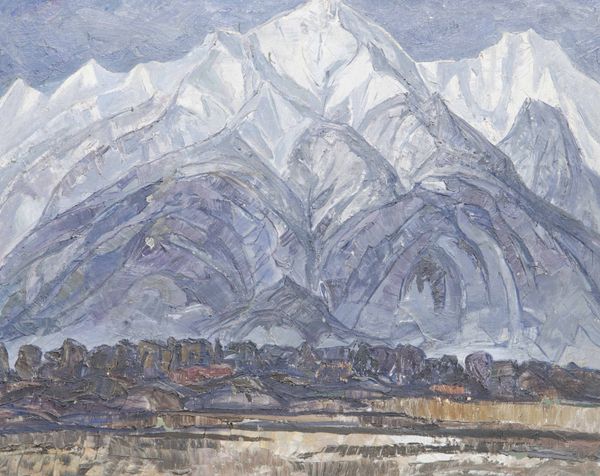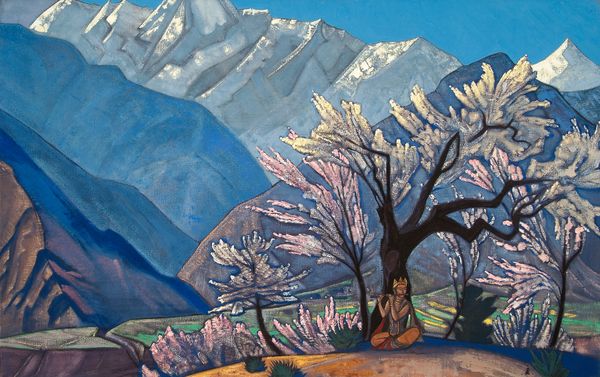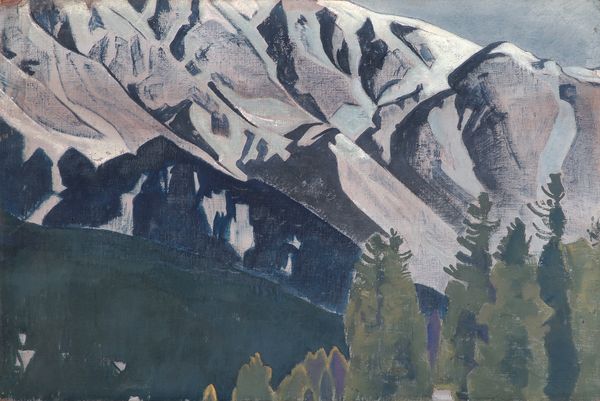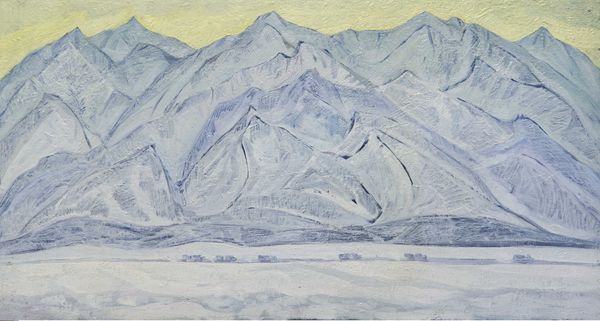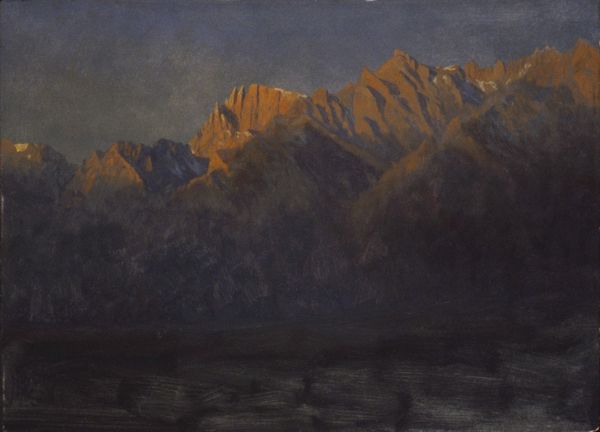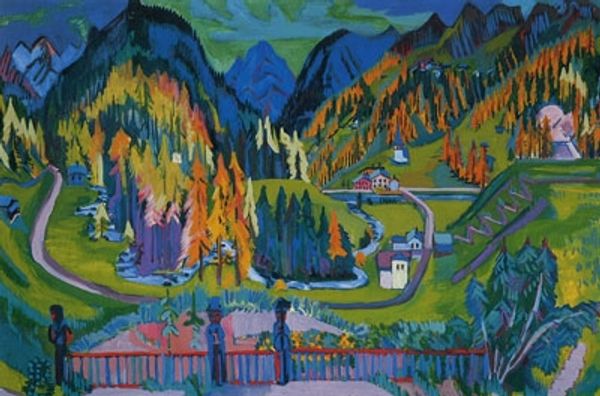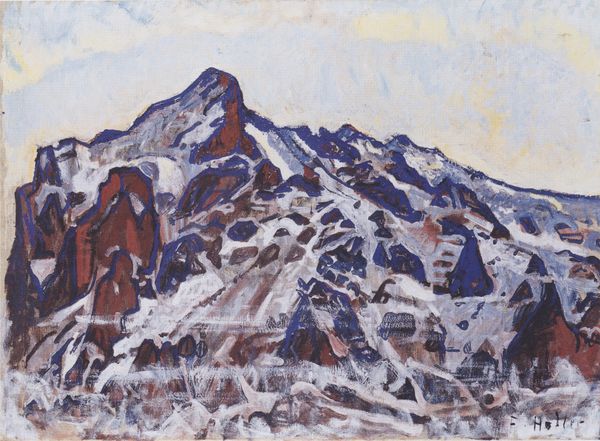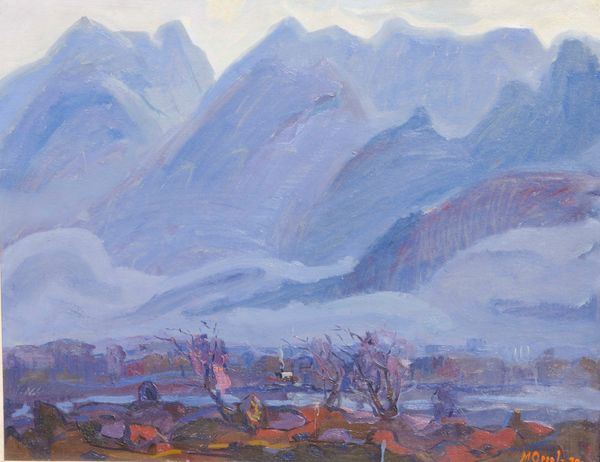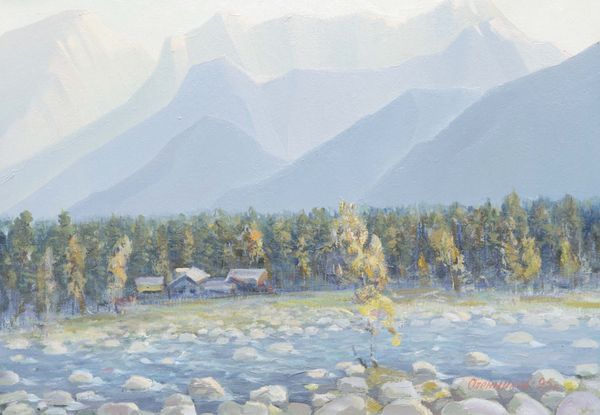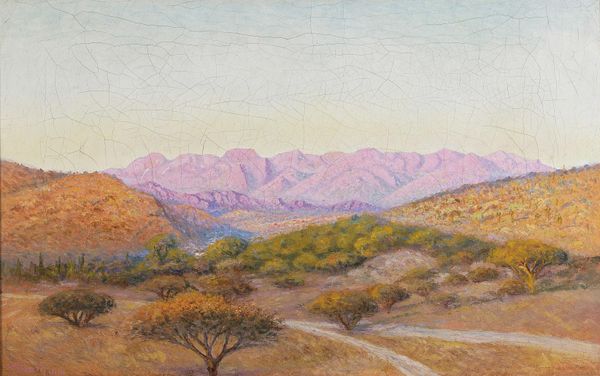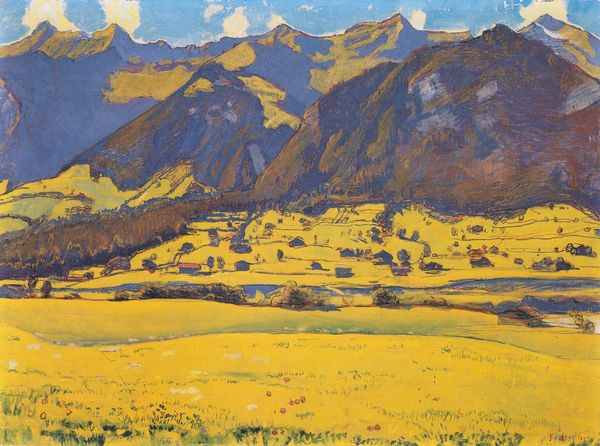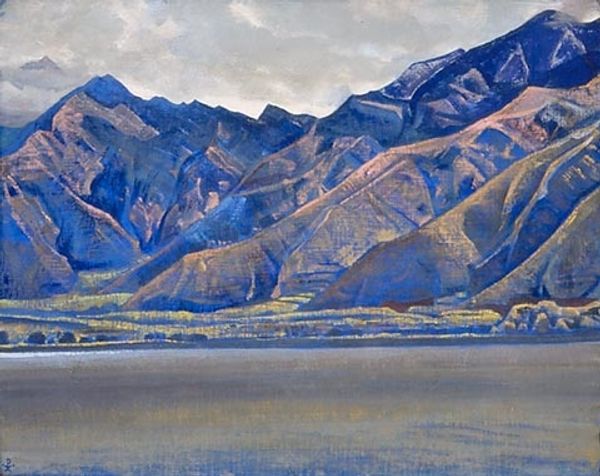
painting, oil-paint
#
painting
#
oil-paint
#
landscape
#
impressionist landscape
#
oil painting
#
expressionism
#
expressionist
#
realism
Dimensions: 48 x 58 cm
Copyright: Mikhail Olennikov,Fair Use
Curator: This landscape painting, rendered with visible brushstrokes and a vibrant palette, is titled "Autumn. The mountains. Arshan" by Mikhail Olennikov. Editor: It feels melancholic. The colors, although bright in some areas, are muted overall. A stillness permeates the scene. It’s the kind of place where secrets are whispered on the wind. Curator: I find the expressive brushwork compelling. Look at how the artist uses impasto to give texture to the trees in the foreground, a style reminiscent of certain expressionist landscapes, albeit rendered with a degree of realism in the mountain forms. Notice, too, the subtle handling of light reflecting off the snow-capped peaks. It brings to mind images of enduring strength. Editor: I agree that the mountain serves as an enduring symbol—one of power. There is also the way the artist situates a small human habitation nestled against nature. That placement highlights how much our individual existence relies upon, but also struggles against the grandeur of the natural world. It's an assertion of humanity, but a fragile one. Curator: That interaction resonates symbolically. Consider the colors: golden foliage hinting at decline, snowy peaks signaling cold futurity, while even a symbol like a single hay bale might stand for a whole harvest cycle in this region's memory. They intertwine in our viewing experience. Editor: Do you believe these sorts of landscapes were inherently neutral or do they offer subtle social critiques. Landscape art often presents a particular worldview related to ideas about the state and our relation to natural resources. Where and who can cultivate land. It could also signify loss tied to a particular population group during its creation. Curator: You pose some excellent theoretical questions, although the details are sparse here, the scene in the artwork might suggest both timelessness and also hidden histories which are culturally inscribed into that land. In other words, both neutrality and a latent socio-political agenda may coincide, according to one's readings. Editor: Precisely. Thanks. It helps to highlight how a landscape can be loaded with different ideologies that coexist as well as exist because of social contexts. Curator: Thank you. These perspectives highlight the evocative power of art. It is fascinating to contemplate how landscapes can trigger narratives both personal and universal.
Comments
No comments
Be the first to comment and join the conversation on the ultimate creative platform.
